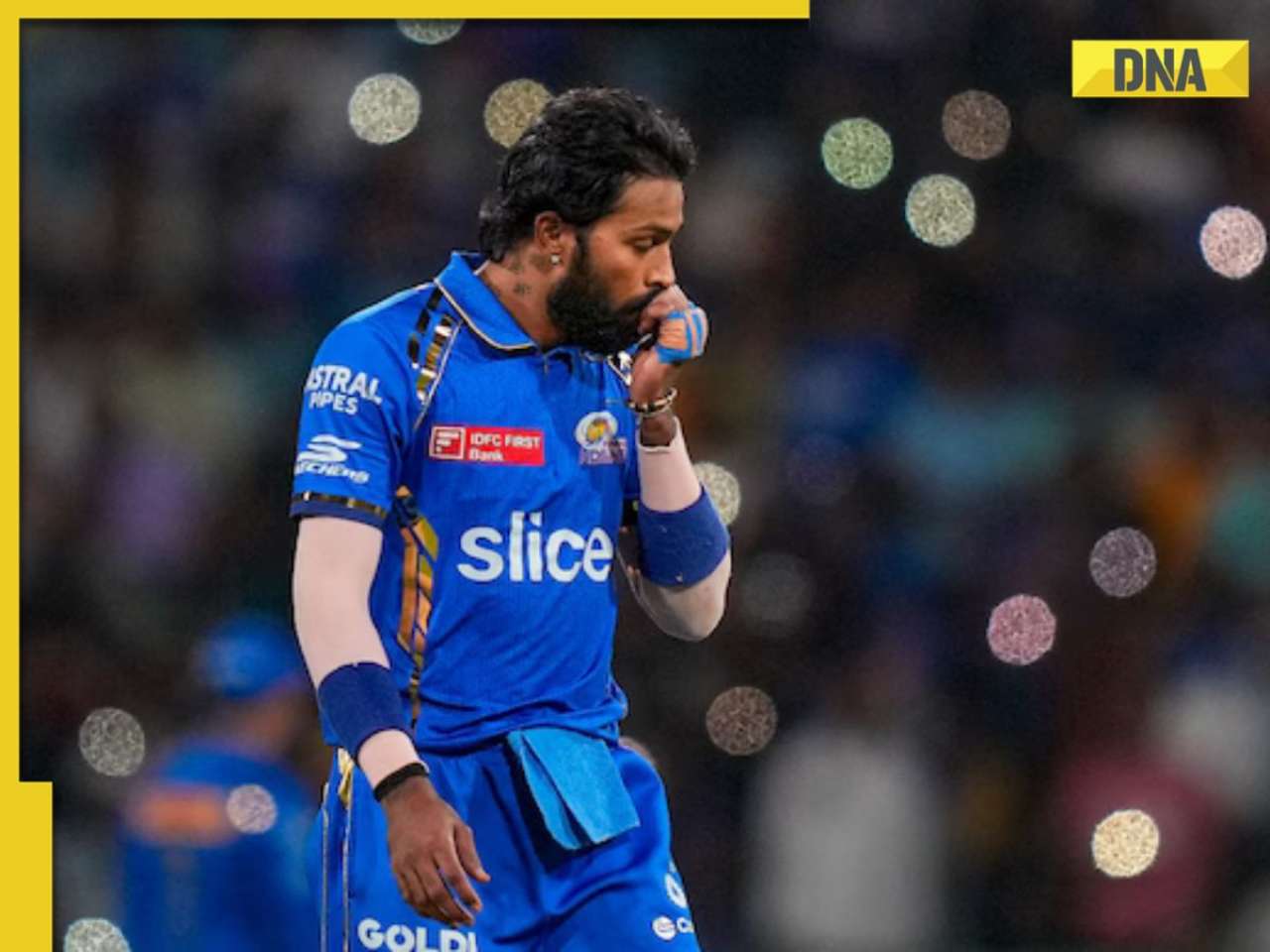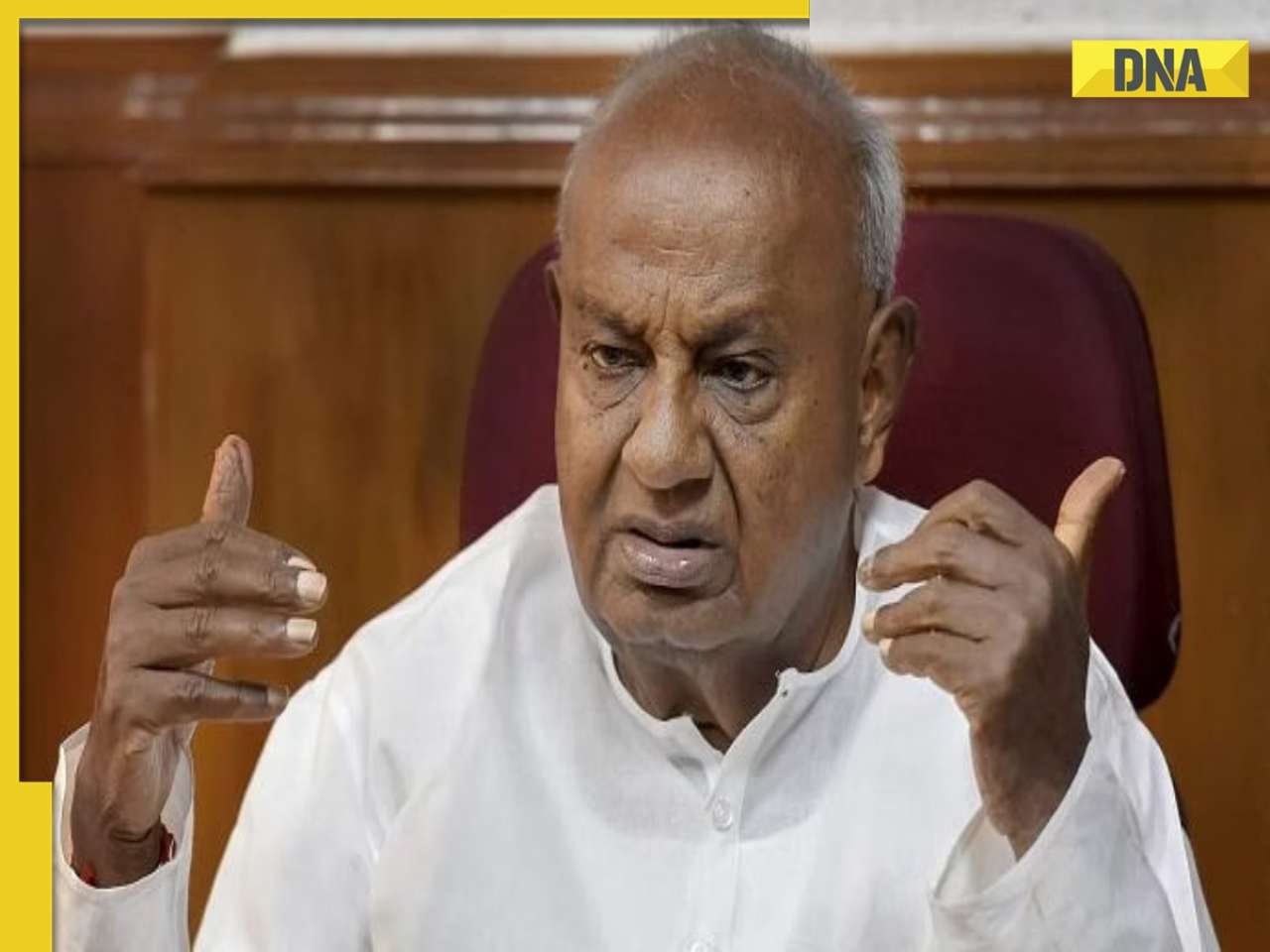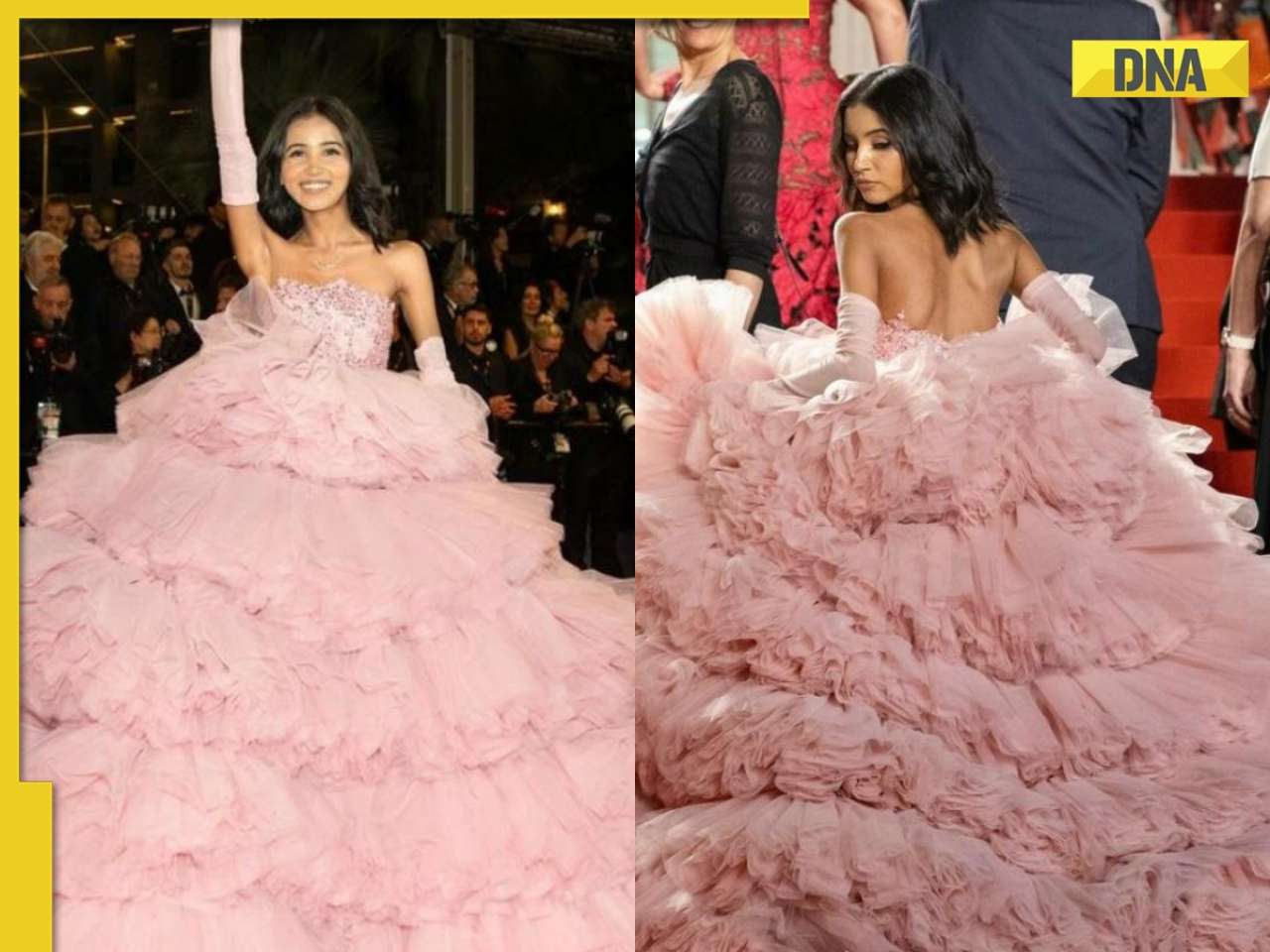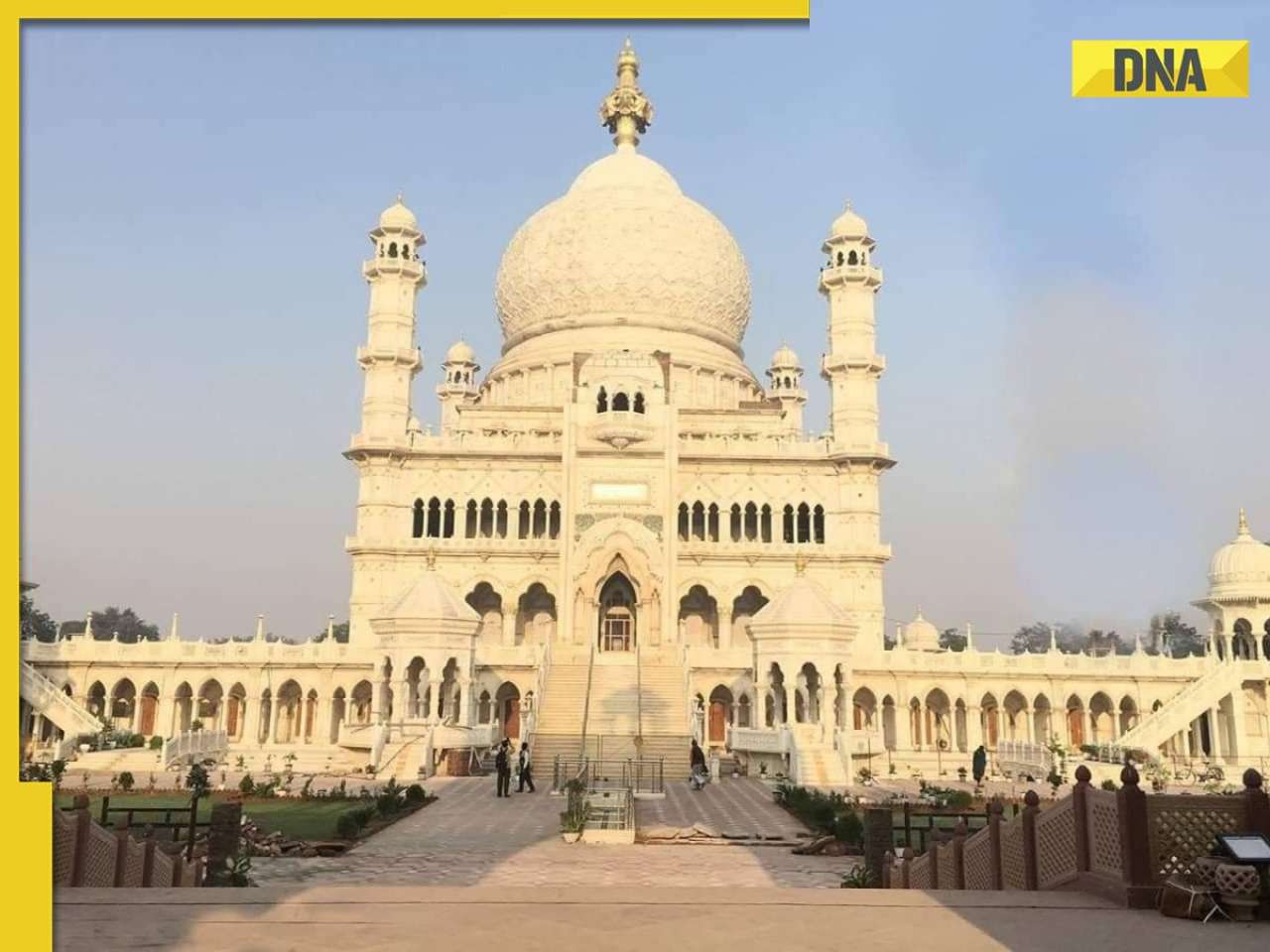The works of 30 prominent contemporary Indian artists are being taken to eight cities in Maharashtra in a unique experiment. Archita Wagle has the details
The works of 30 prominent contemporary Indian artists are being taken to eight cities in Maharashtra in a unique experiment. Archita Wagle has the details
Drawing from his experiences and interactions with art students in small cities, most of whom don't get an opportunity to see contemporary Indian art, artist Sudhir Patwardhan has come up with a unique idea of an art exhibition which will travel from Mumbai (Oct 7 to Oct 16) to seven smaller cities — Amravati (Nov 7 to Nov 13), Nagpur (Nov 17 to Nov 23), Aurangabad (Nov 27 to Dec 3), Sholapur (Dec 8 to Dec 14), Kolhapur (Dec 18 to Dec 24), Pune ( Jan 5to Jan 11), and Nasik (Jan 15 to Jan 21) — in Maharashtra. He says "Most people in small towns are exposed to modern literature, theatre and films but visual art doesn't have the kind of reach and exposure that the other mediums have. They are aware of contemporary Indian art and artists but they haven't seen many of these exhibitions".
Patwardhan in collaboration with Bodhi Art Gallery is curating a show called 'Expanding Horizons' featuring 30 artists like Francis Newton Souza, Tyeb Mehta, Bhupen Khakkar, Gulam Sheikh, Manjit Bawa, Arpita Singh, Gieve Patel, Sudhir Patwardhan, NS Harsha, Anju Dodiya, Jitesh Kallat and others who are prominent names in India's art scene. The exhibition, which Patwardhan describes as "a festival of visual art aimed at visual literacy", will showcase apart from the works of the artists, talks by them about their works, and panel discussions and documentary films about India's art history and her artists.
To turn this idea into reality, Patwardhan along with writer and critic Deepak Ghare (who provided the synopsis and textual information for the exhibition) and other artists like Ranjit Hoskote, Dilip Ranade and Gieve Patel worked out a list of the artists who had influenced contemporary Indian art and the mediums in which they had worked.
The criteria for choosing each artist was the artwork available and how representative the work was of a particular style. The exhibition focuses on the different styles (stylistic, abstract and realistic), the media (from classic drawings, paintings and sculptures to more modern forms like videos and installations) and the different generations to which the artists exhibiting their works belonged to.
However, oweing to the nature of the exhibition certain things (like the size and mobility of the works) had to be kept in mind. Many artists like Atul and Anju Dodiya and Jitesh Kallat from the later generations produced original works for the exhibition, while the artworks of older generation artists like Francis Newton Souza and Meera Mukherjee had to be borrowed from various art galleries.
A unique feature of this exhibition is the narrative and synopsis written in Marathi (keeping in mind the audience) which accompanies every artwork. The narratives give a brief history of the growth of modern art in India and the influences that have shaped contemporary Indian art. Ghare's synopses give a brief idea about the artists and more importantly the styles and mediums for which they are well known. This makes it easier for the common man to understand the artist and his work. After discussing a brief outline with Patwardhan, Ghare worked on the profiles based on his knowledge and the information available to him. “As I was familiar with the works of most of the artists it was easier for me to select the points to be highlighted," he says. As Patwardhan puts it, "The whole narrative is an entry point for the layman. The historical viewpoint and the artist bios are the guidelines to understanding contemporary Indian art".
After looking at the artists included in the exhibition, what appears striking is the absence of a certain name — MF Husain. The reason for his absence is, "First, we didn't get any work which was representative of his style. Second, his inclusion could have created problems for the exhibition and taken away the focus from the purpose which is visual literacy". But Patwardhan hopes that after viewing the exhibition, people will understand what contemporary Indian art is and then "they will realise what the charges against Hussain is all about. Hopefully, they will also realise that his works are not offensive but are simply his interpretations".
The exhibition also features panel discussions and talks by contemporary artists. The panel discussions offer the audience a chance to gain a perspective on the art scene in India today and how it is viewed by various eminent art personalities. The talks offer the audience a chance to interact with the artist and get his perspective. In the Mumbai leg of the exhibition, Valsen Kolleri gave a slideshow presentation, followed by a panel discussion which had eminent personalities like Shanta Gokhale, Jabbar Patel, Kumar Ketkar and others.
No plans have yet been made to sell the artworks on exhibition. According to Vinay Badve, the Bodhi Art representative, while the works which have been borrowed will be returned, Bodhi Art Gallery owns all the works that were specially produced for the exhibition. The audience will simply have to satiate its thirst for contemporary Indian art by viewing the works of these greats.
w_archita@dnaindia.net
![submenu-img]() This singer helped BCCI when it had no money to award 1983 World Cup-winning Indian cricket team, raised 20 lakh by...
This singer helped BCCI when it had no money to award 1983 World Cup-winning Indian cricket team, raised 20 lakh by...![submenu-img]() Virat Kohli’s new haircut ahead of RCB vs CSK IPL 2024 showdown sets internet on fire, see here
Virat Kohli’s new haircut ahead of RCB vs CSK IPL 2024 showdown sets internet on fire, see here![submenu-img]() BCCI bans Mumbai Indians skipper Hardik Pandya, slaps INR 30 lakh fine for....
BCCI bans Mumbai Indians skipper Hardik Pandya, slaps INR 30 lakh fine for....![submenu-img]() 'Justice must prevail': Former PM HD Deve Gowda breaks silence in Prajwal Revanna case
'Justice must prevail': Former PM HD Deve Gowda breaks silence in Prajwal Revanna case![submenu-img]() India urges students in Kyrgyzstan to stay indoors amid violent protests in Bishkek
India urges students in Kyrgyzstan to stay indoors amid violent protests in Bishkek![submenu-img]() Meet IIT graduates, three friends who were featured in Forbes 30 Under 30 Asia list, built AI startup, now…
Meet IIT graduates, three friends who were featured in Forbes 30 Under 30 Asia list, built AI startup, now…![submenu-img]() Meet woman who cracked UPSC in fourth attempt to become IAS officer, secured AIR...
Meet woman who cracked UPSC in fourth attempt to become IAS officer, secured AIR...![submenu-img]() Meet IIT JEE 2024 all-India girls topper who scored 100 percentile; her rank is…
Meet IIT JEE 2024 all-India girls topper who scored 100 percentile; her rank is…![submenu-img]() Meet PhD wife of IIT graduate hired at Rs 100 crore salary package, was fired within a year, he is now…
Meet PhD wife of IIT graduate hired at Rs 100 crore salary package, was fired within a year, he is now…![submenu-img]() Meet woman not from IIT, IIM or NIT, cracked UPSC exam in first attempt with AIR...
Meet woman not from IIT, IIM or NIT, cracked UPSC exam in first attempt with AIR...![submenu-img]() DNA Verified: Is CAA an anti-Muslim law? Centre terms news report as 'misleading'
DNA Verified: Is CAA an anti-Muslim law? Centre terms news report as 'misleading'![submenu-img]() DNA Verified: Lok Sabha Elections 2024 to be held on April 19? Know truth behind viral message
DNA Verified: Lok Sabha Elections 2024 to be held on April 19? Know truth behind viral message![submenu-img]() DNA Verified: Modi govt giving students free laptops under 'One Student One Laptop' scheme? Know truth here
DNA Verified: Modi govt giving students free laptops under 'One Student One Laptop' scheme? Know truth here![submenu-img]() DNA Verified: Shah Rukh Khan denies reports of his role in release of India's naval officers from Qatar
DNA Verified: Shah Rukh Khan denies reports of his role in release of India's naval officers from Qatar![submenu-img]() DNA Verified: Is govt providing Rs 1.6 lakh benefit to girls under PM Ladli Laxmi Yojana? Know truth
DNA Verified: Is govt providing Rs 1.6 lakh benefit to girls under PM Ladli Laxmi Yojana? Know truth![submenu-img]() Kiara Advani stuns in Prabal Gurung thigh-high slit gown for her Cannes debut, poses by the French Riviera
Kiara Advani stuns in Prabal Gurung thigh-high slit gown for her Cannes debut, poses by the French Riviera![submenu-img]() Heeramandi star Taha Shah Badussha makes dashing debut at Cannes Film Festival, fans call him ‘international crush’
Heeramandi star Taha Shah Badussha makes dashing debut at Cannes Film Festival, fans call him ‘international crush’![submenu-img]() Streaming This Week: Madgaon Express, Zara Hatke Zara Bachke, Bridgerton season 3, latest OTT releases to binge-watch
Streaming This Week: Madgaon Express, Zara Hatke Zara Bachke, Bridgerton season 3, latest OTT releases to binge-watch![submenu-img]() Sunanda Sharma exudes royalty as she debuts at Cannes Film Festival in anarkali, calls it ‘Punjabi community's victory’
Sunanda Sharma exudes royalty as she debuts at Cannes Film Festival in anarkali, calls it ‘Punjabi community's victory’![submenu-img]() Aishwarya Rai walks Cannes red carpet in bizarre gown made of confetti, fans say 'is this the Met Gala'
Aishwarya Rai walks Cannes red carpet in bizarre gown made of confetti, fans say 'is this the Met Gala'![submenu-img]() Haryana Political Crisis: Will 3 independent MLAs support withdrawal impact the present Nayab Saini led-BJP government?
Haryana Political Crisis: Will 3 independent MLAs support withdrawal impact the present Nayab Saini led-BJP government?![submenu-img]() DNA Explainer: Why Harvey Weinstein's rape conviction was overturned, will beleaguered Hollywood mogul get out of jail?
DNA Explainer: Why Harvey Weinstein's rape conviction was overturned, will beleaguered Hollywood mogul get out of jail?![submenu-img]() What is inheritance tax?
What is inheritance tax?![submenu-img]() DNA Explainer: What is cloud seeding which is blamed for wreaking havoc in Dubai?
DNA Explainer: What is cloud seeding which is blamed for wreaking havoc in Dubai?![submenu-img]() DNA Explainer: What is Israel's Arrow-3 defence system used to intercept Iran's missile attack?
DNA Explainer: What is Israel's Arrow-3 defence system used to intercept Iran's missile attack?![submenu-img]() This singer helped BCCI when it had no money to award 1983 World Cup-winning Indian cricket team, raised 20 lakh by...
This singer helped BCCI when it had no money to award 1983 World Cup-winning Indian cricket team, raised 20 lakh by...![submenu-img]() This film had 3 superstars, was unofficial remake of Hollywood classic, was box office flop, later became hit on...
This film had 3 superstars, was unofficial remake of Hollywood classic, was box office flop, later became hit on...![submenu-img]() Meet Nancy Tyagi, Indian influencer who wore self-stitched gown weighing over 20 kg to Cannes red carpet
Meet Nancy Tyagi, Indian influencer who wore self-stitched gown weighing over 20 kg to Cannes red carpet![submenu-img]() Telugu actor Chandrakanth found dead days after rumoured girlfriend Pavithra Jayaram's death in car accident
Telugu actor Chandrakanth found dead days after rumoured girlfriend Pavithra Jayaram's death in car accident![submenu-img]() Meet superstar who faced casting couch at young age, worked in B-grade films, was once highest-paid actress, now..
Meet superstar who faced casting couch at young age, worked in B-grade films, was once highest-paid actress, now..![submenu-img]() Viral video: Flood-rescued dog comforts stranded pooch with heartfelt hug, internet hearts it
Viral video: Flood-rescued dog comforts stranded pooch with heartfelt hug, internet hearts it![submenu-img]() Dubai ruler captured walking hand-in-hand with grandson in viral video, internet can't help but go aww
Dubai ruler captured walking hand-in-hand with grandson in viral video, internet can't help but go aww![submenu-img]() IPL 2024: Virat Kohli drops massive hint on MS Dhoni’s retirement plan ahead of RCB vs CSK clash
IPL 2024: Virat Kohli drops massive hint on MS Dhoni’s retirement plan ahead of RCB vs CSK clash![submenu-img]() Do you know which God Parsis worship? Find out here
Do you know which God Parsis worship? Find out here![submenu-img]() This white marble structure in Agra, competing with Taj Mahal, took 104 years to complete
This white marble structure in Agra, competing with Taj Mahal, took 104 years to complete













































)
)
)
)
)
)